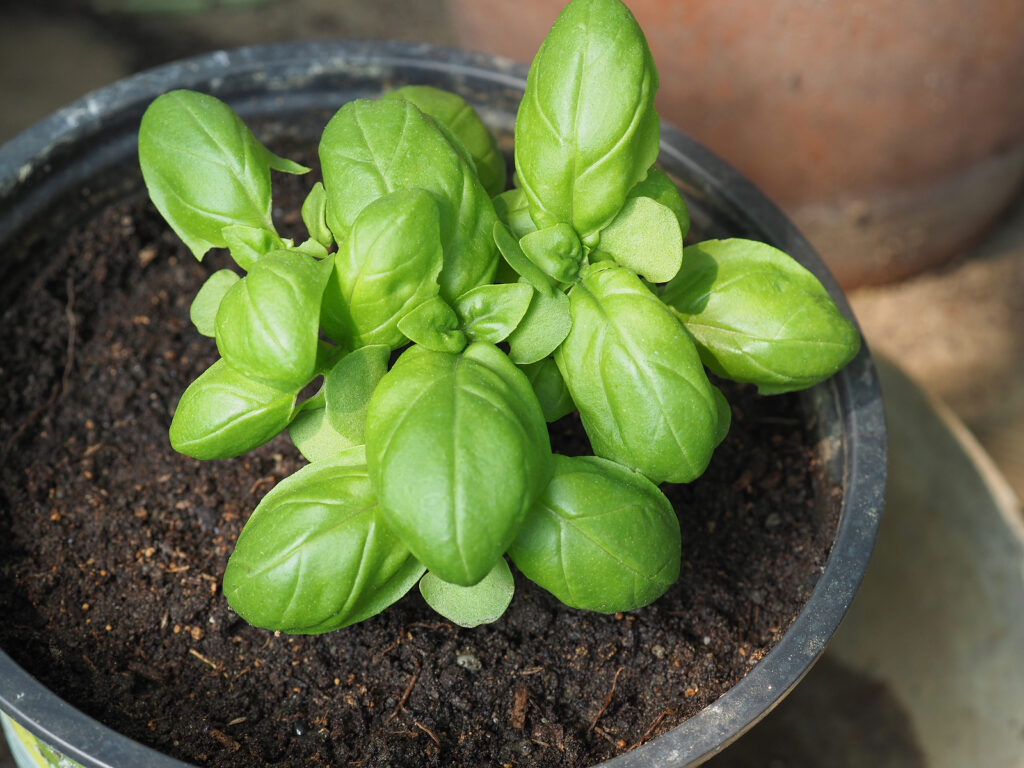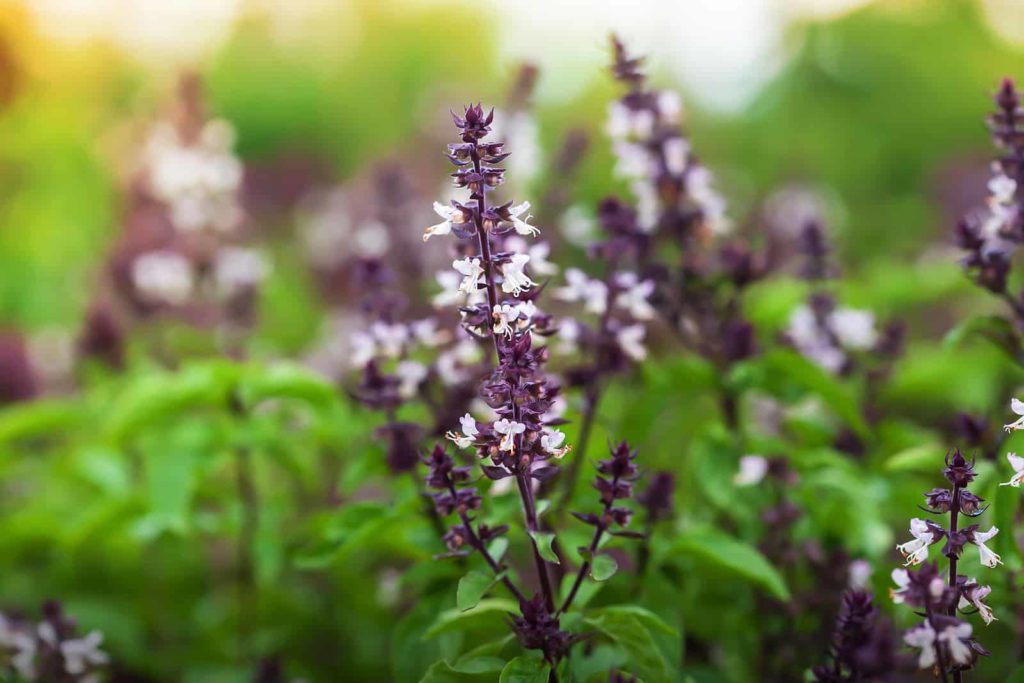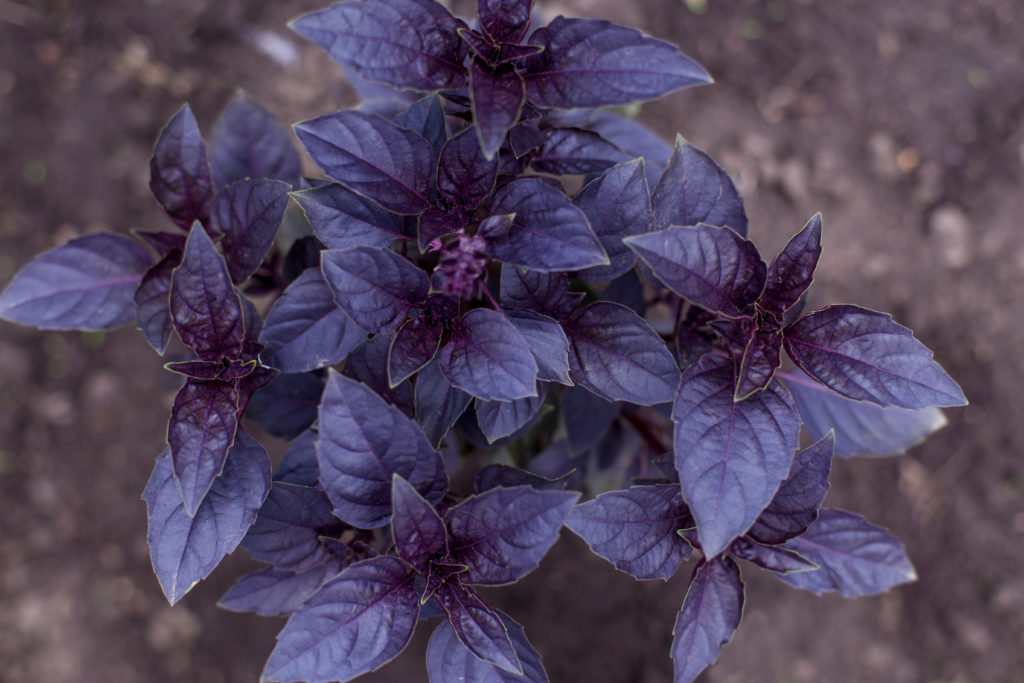Basil is one of the most beloved herbs in home gardens around the world. As someone who has grown basil for many seasons—indoors, outdoors, and in containers—I can tell you that it’s as rewarding as it is aromatic.
Whether you’re making homemade pesto, adding fresh leaves to summer salads, or companion planting alongside tomatoes, basil brings life to the garden and flavor to the kitchen. In this comprehensive guide, I’ll share not only the how-to but also tips from years of hands-on experience growing and preserving this warm-weather herb.

🪴 Get to Know Basil
- Botanical name: Ocimum basilicum
- Plant type: Tender annual (perennial in subtropical climates)
- Origin: India and Central America
- Flavor: Sweet, peppery, and slightly licorice-like
- Best known for: Pesto, Mediterranean and Asian cuisine
- Fun fact: Basil is a natural companion plant for tomatoes and peppers, improving both their growth and flavor.
☀️ Where to Plant Basil
Basil thrives in full sun—6 to 8 hours a day is ideal. Indoors, a sunny windowsill will do the trick. Use well-drained sandy loam soil with a pH of 5.5 to 7.5. Avoid overly rich soil, which can dilute the herb’s essential oils and flavor.
🧑🌾 My tip: I plant basil near tomatoes every year—they grow better together and it makes harvest time a breeze.
🗓️ When to Plant Basil
- Indoors: Start seeds 6 weeks before your last frost date.
- Outdoors: Wait 2–4 weeks after the last frost. Basil is frost-sensitive and won’t tolerate nighttime temps below 50°F.
🌡️ Pro tip: Purple basil varieties need warmer soil to germinate—wait until the soil hits 70°F.
🌱 How to Plant Basil
- Seed depth: ⅛ to ¼ inch
- Spacing: 12–18 inches apart; smaller varieties can be 6–12 inches apart
- Succession planting: Sow every 2–3 weeks for a continuous harvest
🧑🍳 If you love pesto like I do, plant at least 6–12 basil plants. For preserving, grow even more.
💧 Watering and Feeding Basil
Basil likes moist but not soggy soil. Let the top inch dry out between waterings. Fertilize sparingly—too much nitrogen will produce lush leaves with weak flavor.
🧪 I prefer foliar feeding with diluted seaweed extract a couple of times per season.
✂️ Basil Care and Maintenance
- Pinch back stems regularly to encourage bushy growth
- Remove flowers as they form to extend leaf production
- Mulch to retain moisture and suppress weeds
- Stake taller varieties if needed
🧤 I avoid pruning woody stems—only the green growth. And I always harvest before the first frost.
🪴 Growing Basil in Containers
Basil is a fantastic choice for container gardening. Use a pot at least 6 inches deep, and place it in a sunny spot. For indoor winter growing, stick with compact or small-leaved varieties like ‘Spicy Globe’ or ‘Greek’.
🐛 Pests and Diseases
- Pests: Aphids, slugs, and snails
- Diseases: Fusarium wilt and damping-off
🦠 To avoid disease, I rotate my basil beds every 3–4 years and plant fusarium-resistant varieties like ‘Aroma’. Always water at the base to keep leaves dry.
✂️ How to Harvest Basil
- Start harvesting 50–60 days after planting
- Pinch leaves regularly to keep the plant productive
- Harvest in the morning for the best flavor
- Always leave a few sets of leaves on the stem to encourage regrowth
🍝 Basil in the Kitchen
Basil is incredibly versatile:
- Add fresh to salads, pasta, pizza, and tomato dishes
- Cook into soups and sauces to deepen flavor
- Pair with lemon, garlic, cheese, and olive oil for classic pesto
🧄 One of my favorite ways to use basil? Layer fresh leaves on a tomato sandwich with a dash of salt. Simple and unforgettable.
❄️ Preserving and Storing Basil
- Fresh: Wrap in a damp paper towel in the fridge (around 40°F)
- Drying: Air-dry leaves out of direct sun; store in an airtight container
- Freezing: Chop and freeze with olive oil in ice cube trays
- Vinegar infusion: Add to white wine vinegar for an aromatic flavor boost

🌿 How to Propagate Basil
- From seed: Germinates quickly in warm soil (over 60°F)
- From cuttings: Root in water or moist vermiculite—ready to transplant in 10–14 days
🪴 This is how I keep basil going indoors through winter. Just snip a healthy stem and root it on a sunny windowsill.

🌱 Best Basil Varieties to Grow
For Pesto:
- ‘Genovese’, ‘Sweet Basil’, ‘Aroma 1’, ‘Nufar’
For Indoor Growing:
- ‘Greek’, ‘Spicy Globe’, ‘Magical Michael’
For Flavor Adventure:
- Lemon basil – citrusy and fresh
- Thai basil – sweet licorice flavor
- Cinnamon basil – warm spice notes
- Purple basil – dramatic and aromatic
🌿 I always grow a mix—some for cooking, some just because they’re beautiful.
Final Thoughts
Basil is more than just an herb—it’s an experience. Whether you’re a beginner or a seasoned gardener, this plant offers beauty, aroma, and flavor all summer long. With the right care and a few insider tips, you can enjoy fresh basil at your fingertips and fill your kitchen with its unmistakable scent.
🌿 Start Here: How to Grow, Harvest, and Use Basil: Complete Guide
🌿 Growing and Care
- Planting Basil for a Flavorful Harvest: When, Where, and How to Get It Right
- How to Grow Basil in Pots Indoors and Out: A Gardener’s Guide
- Propagating Basil Made Easy: Grow from Seed or Cuttings
- How to Water, Feed, and Care for Basil: A Gardener’s Year-Round Guide
- How to Prune Basil for Maximum Growth and Flavor: Expert Tips
- Basil Growing and Harvesting: Expert Tips and Techniques
- Common Basil Pests and Diseases—and How I Keep Them Out of the Garden
🌿 Harvesting and Preservation
- How and When to Harvest Basil for Maximum Flavor (Tips from an Experienced Gardener)
- Preserving Basil: Easy Ways to Keep It Fresh, Frozen, or Dried
🍴 Culinary Use
- 25 Delicious Ways to Use Basil in the Kitchen (With Tips from a Gardener-Cook)
- How to Make Classic Basil Pesto
- Basil and Tomato Soup
- Ways to Serve Sweet Basil
🌿 Varieties and Background
- Best Basil Varieties to Grow in Your Garden
- 10 Basils to Grow and Use in the Kitchen
- Get to Know Basil (Basil History, Types, and Fun Facts)
Also of interest:
Related articles:
Best Herbs for Container Growing
Planning the Home Fruit Garden
Garden Planning Books at Amazon:
- Vegetable Garden Almanac & Planner
- Kitchen Garden Grower’s Guide Vegetable Encyclopedia
- Vegetable Garden Grower’s Guide
- Tomato Grower’s Answer Book
Grow culinary kitchen herbs:
Learn how to plant, grow, and harvest your favorite kitchen herbs. Click below for all you need to know about culinary herbs.
- Anise
- Anise Hyssop
- Arugula
- Basil
- Bay
- Bee Balm
- Borage
- Calendula
- Caraway
- Catnip
- Chamomile
- Chervil
- Chives
- Cilantro-Coriander
- Clary
- Costmary
- Cress
- Dill
- Fennel, Sweet
- Horseradish
- Hyssop
- Lavender
- Lemon Balm
- Lemon Verbena
- Lovage
- Marjoram
- Mint
- Nasturtium
- Oregano
- Parsley
- Perilla
- Rosemary
- Sage
- Salad Burnet
- Savory
- Scented Geranium
- Shiso
- Sorrel
- Stevia
- Sweet Cicely
- Tarragon
- Thyme



